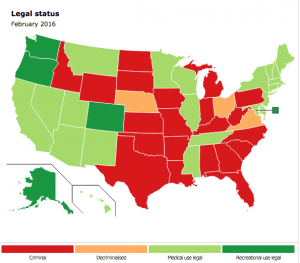Growing up in typical suburbia, I played three sports: soccer, basketball, and (unfortunately) softball. While many amazing bonds were built and numerous championships were won, there were some negatives that came with my township sports teams. The biggest nuisance: overbearing sports parents.
Everyone knows what I’m talking about, the dad standing 5 feet from his son in goal, coaching completely differently from the ACTUAL coaches. The mom scowling and muttering in her fold up chair at the softball field because her daughter was benched after three consecutive strike outs at bat. The parents at the pizzeria after the basketball game, bragging about their children’s personal stats as opposed to celebrating a TEAM win. It’s insane. When did youth sports stop focusing on the growth and development of children and start honing in on the competitive nature of parents?
This, SC200, is a psychological term known as narcissistic parenting, and I was a victim of it. Luckily, I was never remotely good enough at any of the three sports I played to be extremely affected by narcissistic parenting, but plenty of young children grow up to be insecure adults as a result of their parents’ self-absorption, and many childhood athletes give up their sport because they’re tired of performing for their parents instead of for themselves. In fact, according to Jay Atkinson of the Boston Globe, of the 45 million kids that play youth sports in America, about 80 percent have given up on their “passion” by age 15.
This fact stunned me. 36 million kids quit sports before they even hit high school, and a huge factor in their decision is their own parents’ narcissism? What could the mechanism be? Kelly Wallace of CNN has made an interesting, reasonable case. She has inferred something that I have often thought about myself, that narcissistic parents live vicariously through their children because they have felt unsuccessful in their own lives. Wallace cites Joseph Burgo, author of The Narcissist You Know: Defending Yourself Against Extreme Narcissists in an All-About-Me Age, as confirmation for her theory. Burgo believes that narcissistic parents spend their child’s formative years grooming her into the person they wish they had been. He also hypothesizes that a distressing, chaotic childhood could lead a parent to narcissism in order to mask lingering insecurities.
Since I couldn’t find any concrete studies that delved into the extensive science behind narcissistic parenting, I’ve decided to talk about how I think a study could be conducted. A possible explanation could be the way narcissistic parents were treated when they were children. If I was in charge of the study, I would treat the supposedly “unsuccessful” lives as the independent variable and narcissism in parents as the dependent variable. This would give us the following options.
Direct causation: “unsuccessful” lives causes narcissism in parents.
Reverse causation: narcissism in parents causes ”unsuccessful” lives.
Confounding variables that could have an effect could be competition between parents, social norms, or depression affecting self-image. As always, chance is an option. An experimental study wouldn’t necessarily be possible, because the causal variable could not be easily manipulated. Instead, the study would have to be observational. One way this study could be conducted could be through the use of two random surveys. The first could be advertised through different platforms, and preliminary questions could be used to weed out non-narcissistic parents. These questions could focus on how parents treat their children in competitive situations, how they feel when their child “fails,” and their thoughts on their own needs versus their children’s. The second could be used to calculate baseline statistics on the cause of narcissistic parents, by focusing questions more on the history of the parents rather than their relationships with their children.
This study seems as if it could be difficult to conduct, especially considering parents may feel inclined to answer questions in an anti-narcissistic way. However, I do think it would be extremely interesting to have a little more science backing up this topic of parental narcissism. While we wait on that, we can avoid becoming narcissistic people ourselves by taking the advice of Burgo, who believes that a parent’s paying more attention to the well-being of his or her child instead of catering to his or her ego is the first and greatest step to eliminating narcissism.



















